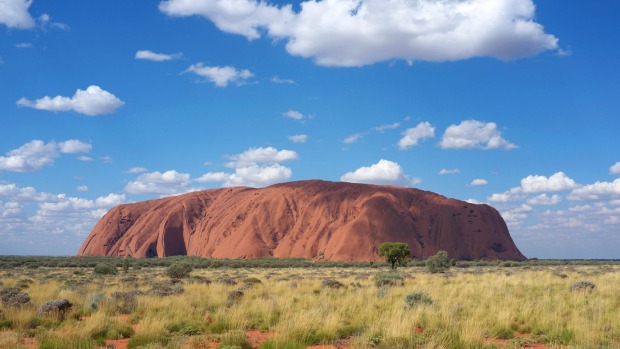
"A hundred bucks for your bike," says a tired but cheery woman who is walking towards me on the dirt-red track. I smile sympathetically but keep pedalling on my journey around Uluru.
The early-morning air is fresh and crisp. I'm riding a bike around the 10.5-kilometre base of Uluru. I leave the car-park activity behind and set off on the Lungkata Walk, the first section of the track, travelling anticlockwise.
For the first 30 minutes I have a magic run, not meeting another soul. It's an amazing experience to be riding right beside the "Rock" on a quiet morning, feeling like I'm the only one in the world.
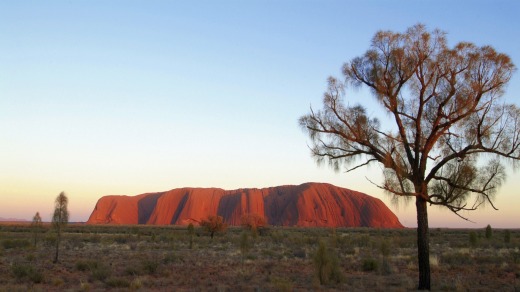
The track is flat, apart from a few bumps and a squishy patch of sand at the start.
Long gone are the days when it was cool to climb Uluru but surprisingly about 20 per cent of visitors still attempt it, disregarding the traditional owners' request. A better way to see Uluru is to ride or walk around the base track.
It's hard to believe that it's 30 years this month since Uluru was handed back to its traditional owners. The Anangu have leased the land back to government for 99 years and are keen that we all understand its spiritual significance.
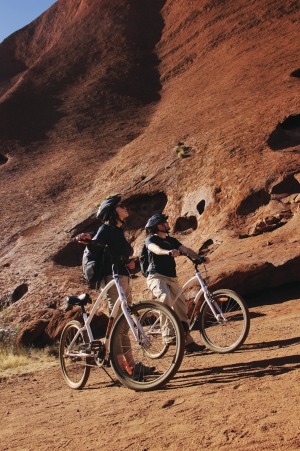
Earlier, much earlier, I rolled out of bed for a sunrise trip to Uluru with small tour operator SEIT.
I'm delighted to discover there are only six others in the minibus (the maximum number is 11). Our driver, Luke Fitzmaurice, knows the best spot to park, away from the busy areas, for the morning sunrise. We pull into a little side lane where our bus is the only vehicle. It's dark and chilly and I'm glad I brought layers of clothing, including a woolly cap and gloves. A few minutes later two other cars stop but we're a quiet, reverential group waiting for the sunrise.
It's amazing how much light is around even before the sun makes its appearance. As the sun rises, the rays hit the rock, and the light and shade change every few minutes. It's a magical experience and I forget the others and feel the spiritual pull of Uluru.
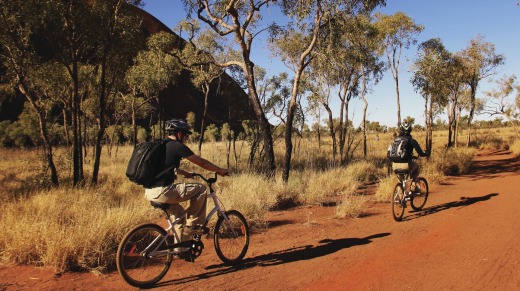
As the day gets under way, Fitzmaurice rewards us with tea, coffee and snacks. Then we're off again to another spot and to explore the area on foot. It's a beautiful time to see Mutitjulu Waterhole, a few days after some rain. Here I learn about Kuniya and Liru and how Uluru was created. Fitzmaurice explains that we are allowed to know only the children's version of these stories.
The Anangu emphasise that these are creation stories and not dreamtime myths.
Recent evidence suggests that Anangu have lived in the area for 30,000 years. The first contact with white people was in the 1950s and there are some elders who still remember it. Ayers Rock was renamed Uluru in 1985 and received UNESCO World Heritage listing in 1987 for its natural landscape and in 1994 for its culture values.
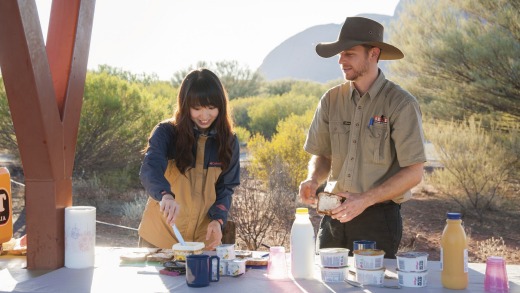
Fitzmaurice explains that the Anangu see themselves as custodians of the area. Photos are a sensitive issue and there are areas clearly signposted areas where you are asked not take photos as these would reveal secret men and women's business.
Further on the family cave, Mutitjulu, is rich in rock paintings. This is where families would rest and camp, the women collecting bush foods while the men hunted.
Later I explore the nearby Cultural Centre, which has fascinating material, and then take a shuttle bus back to the resort.
Voyages, which runs the Ayers Rock Resort, has made great inroads increasing its Indigenous employees, moving from two in 1985 to 250 today. The resort has been sensitively developed over its 30 years. Kulata Academy Café (run by Indigenous trainees) in the Town Square is a nice spot to enjoy a coffee. Nearby Wintjiri Arts and Museum, which opened in June, offers an insight into the history of Uluru and displays Indigenous art. Works by the not-for-profit Tjanpi Desert Weavers, of Alice Springs, are wonderful and quirky, just the thing to bring home.
Another special experience is the Tali Wiru dinner, where 20 people are taken to a remote location with a perfect view of the rock for a sunset gourmet meal. Native ingredients such as lemon myrtle, native thyme, samphire and quandong along with emu and kangaroo are skilfully worked into the menu.
It's wonderful sitting in the desert as the light begins to fade while somehow the chefs cook up a feast. Afterwards we listen to stories by campfire as we sip on hot chocolates and cognacs.
Watching the sunrise with a handful of people, riding around the rock solo and enjoying a sunset dinner in the desert are the highlights of my stay as Uluru continues to work its magic.
Fly
Jetstar fly Melbourne to Uluru from $165 one way.
Stay
Sails in the Desert rooms from $388. The campground, Emu Walk Apartments and Desert Gardens Hotel are also operated by Voyages.
Do
Outback Cycling – bike hire $40 for three hours, SEIT Uluru highlights $119, Tali Wiru dinner $325.
Visit
Wintjiri Arts and Museum, Ayers Rock Resort; Cultural Centre, Uluru-Kata Tjuta National Park.
More
parksaustralia.gov.au/uluru/